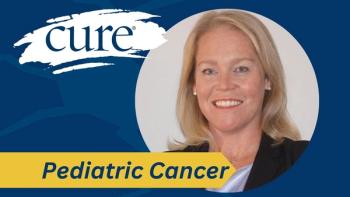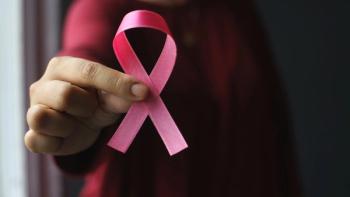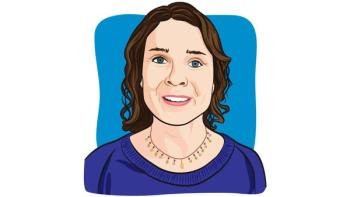
A Mountain Climber and Cancer
Climbing mountains and facing cancer are similar in ways.
I discovered the sport of mountain climbing by accident. Living in the Pacific Northwest, I was surrounded by glorious peaks of all kinds and my first memorable trek took me into the "Three Sisters Wilderness "in Eastern Oregon to do a little backpacking with friends.
"The Three Sisters" is a trio of ancient volcanoes, each one a little higher and a little more difficult to ascend. The year was 1974 and I was cancer-free and 24 years old. Halfway up the first peak, I stopped with my fellow climbing mates to smoke a cigarette. I recall being deeply uncomfortable with that, realizing that I was standing in one of the most beautiful outdoor scenes I had ever experienced, and doing some real damage to my body — the very body that brought me to this place. By the time my backpacking trip was over, I was hooked on climbing, and not long after that, I gave up smoking forever.
Over the next several years, I went on to climb all of the great peaks of Washington, Oregon and Northern California. Mt. Rainier. Mt. Hood. Mt. Jefferson. Mt Saint Helens. Mt Shasta. Mt. Whitney. I had them all in my sights, and I wanted to challenge myself by climbing higher and more difficult peaks whenever I could.
Mountains offer a lot of quiet time to reflect on things. Climbing them is really a solo sport that, in my case, united a mountain with a man, creating a remarkable melding of Earth and spirit. A climber is forced to make many decisions and calculations along the path — always aware and always alert. Climbers are presented with a world so vast that it becomes a most extraordinary revelation to actually see themselves as a small guy in a very big universe.
Having cancer can feel like that, too.
It's a disease that has such an influence on our lives that it can leave us alone and vulnerable with its isolating enormity. But if we choose to climb up and into the experience of survival, meeting the challenges with patience and a bit of courage, it can offer a wider view of life and death. The power of a mountain is felt deep within a climber's soul. You realize that this place could take your life at any moment, or infuse you with the greatest inspiration to live in new and remarkable ways.
Just like cancer.
After my adventures of climbing on the West coast, I wanted to experience the peaks in other states, and then other countries. I scaled Mt. Elbert in Colorado, the second highest peak in the contiguous United States (after Whitney) and the astonishing mental high and spiritual refreshment that I got from that time alone became my new passion.
Still, I wanted more.
Thorong La in Nepal at 18,000 feet was my first international climb, followed by Cotopaxi in Ecuador at 20,000 feet. And finally, my longtime dream to climb the Matterhorn was within my grasp. Flying to Zermatt, Switzerland, I hired a Swiss guide to accompany me to its summit since the technical challenge is both dangerous and difficult. We were scheduled to climb the peak over two days, spending the night on the Hornli ridge at the base camp, halfway up the mountain.
And then, the unthinkable happened. Another Swiss guide fell to his death near the top of the mountain. Though there are a number of casualties on the Matterhorn every year, a fatal fall had not happened to one of these professional climbers in over a decade. The Matterhorn is among the deadliest mountains in the world. By the late 1980s, it was estimated that over 500 people had died while attempting its summit, with an average of about 12 deaths each year. The mountain was "closed down" to all climbing for a week to mourn the loss of this man, while waiting for climbing conditions to improve.
I had an airline ticket home and could not afford to wait. Disappointed, I headed back to my home in Oregon. On the flight back, I began to think about my motivation for climbing and questioning where it was taking me. I came to understand that the drive to push higher and further was a wake-up call of sorts, inviting me to accept my sport as a wonderful opportunity to know nature more intimately while taking a grand expedition into myself, my passions and my purpose. I realized that there was a distinct risk of me dying if I kept pushing. And the choice was mine.
Now, many years later, with breast cancer threatening my life, I have to make the same sorts of decisions with the same precision that climbing demanded of me. But in this case, I cannot simply walk away from the danger. Cancer is an avalanche waiting to happen, and the route we take can spell the difference between living and dying.
At the age of 45 I gave up climbing as a sport. And now, as I approach my 68th birthday and my fourth year as a breast cancer survivor, I have vowed to never give up my climb to the summit of wellness.
Climbing mountains taught me to how to test my resolve and discover my own strengths and limitations both physical and mental. Little did I know that one day I would be called upon to utilize those same capacities to navigate the peaks and valleys of breast cancer.




